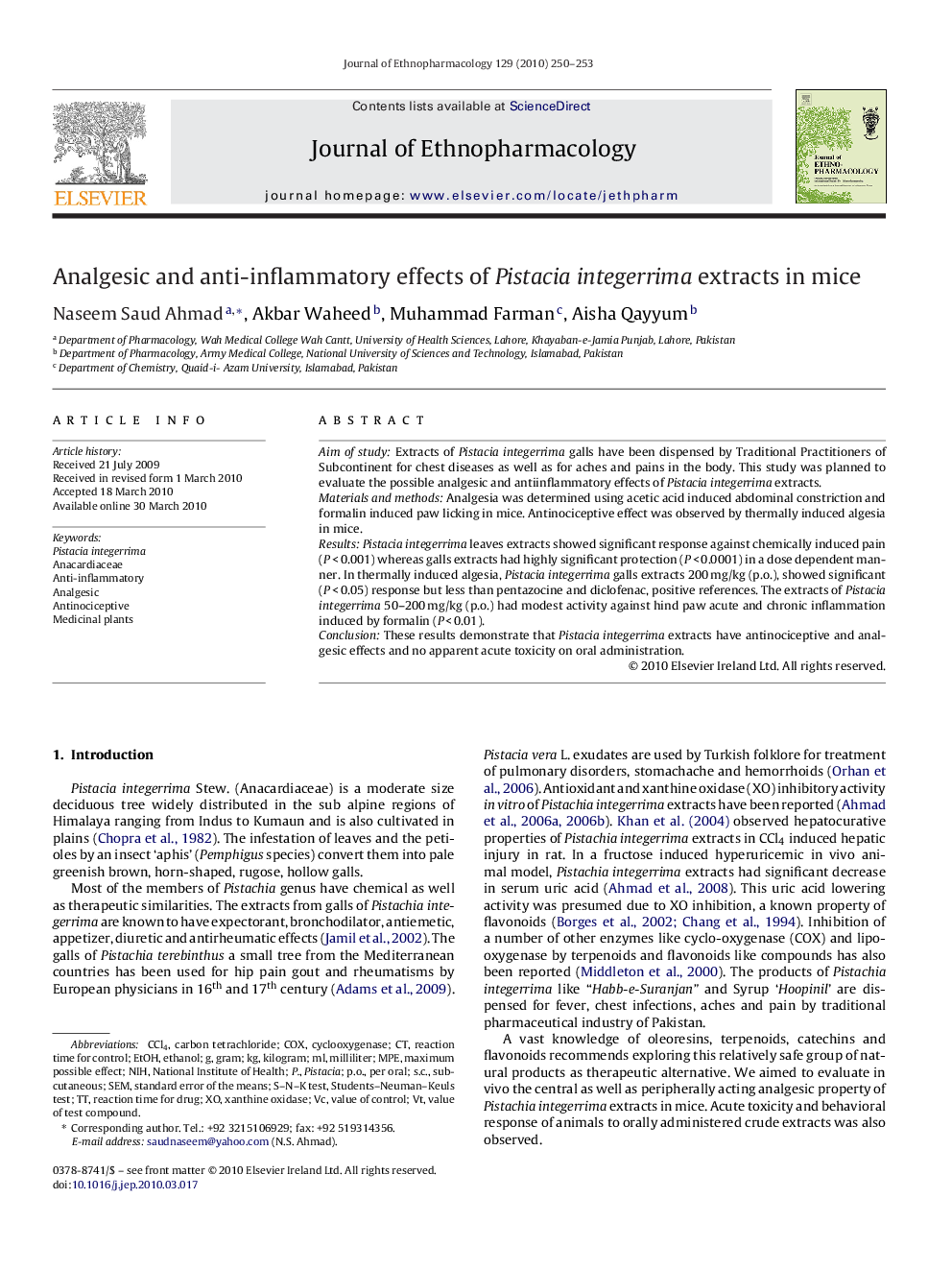| Article ID | Journal | Published Year | Pages | File Type |
|---|---|---|---|---|
| 2546287 | Journal of Ethnopharmacology | 2010 | 4 Pages |
Aim of studyExtracts of Pistacia integerrima galls have been dispensed by Traditional Practitioners of Subcontinent for chest diseases as well as for aches and pains in the body. This study was planned to evaluate the possible analgesic and antiinflammatory effects of Pistacia integerrima extracts.Materials and methodsAnalgesia was determined using acetic acid induced abdominal constriction and formalin induced paw licking in mice. Antinociceptive effect was observed by thermally induced algesia in mice.ResultsPistacia integerrima leaves extracts showed significant response against chemically induced pain (P < 0.001) whereas galls extracts had highly significant protection (P < 0.0001) in a dose dependent manner. In thermally induced algesia, Pistacia integerrima galls extracts 200 mg/kg (p.o.), showed significant (P < 0.05) response but less than pentazocine and diclofenac, positive references. The extracts of Pistacia integerrima 50–200 mg/kg (p.o.) had modest activity against hind paw acute and chronic inflammation induced by formalin (P < 0.01).ConclusionThese results demonstrate that Pistacia integerrima extracts have antinociceptive and analgesic effects and no apparent acute toxicity on oral administration.
Graphical abstractThe leaves and the petioles of Pistacia integerrima infested by an insect ‘aphis’ results in pale greenish brown, rugose, structures called galls.Ethanol and aqueous extracts of leaves and galls had significant antinociceptive activity observed by writhing test in mice but in hot plate test leaves showed insignificant antinociceptive activity. In the formalin induced hind paw edema test, leaves showed less protection than galls. The galls have stress induced changes in their composition resulting in increased biological activity.Figure optionsDownload full-size imageDownload as PowerPoint slide
